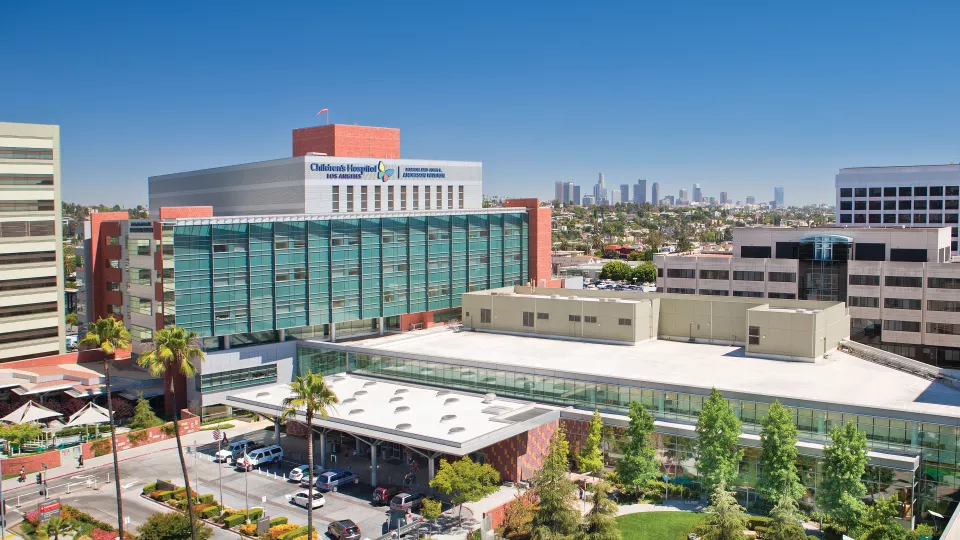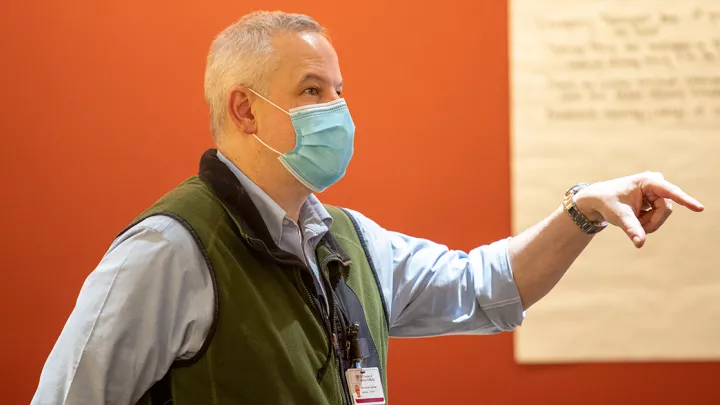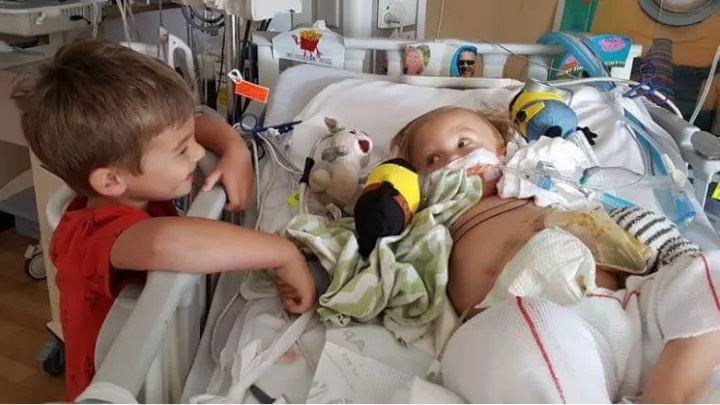
Keeping It Real
Once upon the 1990s, Michael Smit, MD, was well along the route to being an Army officer when the same people who recommended he start down that way unknowingly prompted him to swerve into becoming an epidemiologist. At the encouragement of his aunt and uncle, Dr. Smit attended the United States Military Academy at West Point, from where he graduated in 1993.
But a couple of bad knee injuries forced him out of the Army, after which he read a book called “The Hot Zone.” The best-seller, written by Richard Preston, chronicled the 1989 Ebola outbreak at a primate research facility in Reston, Virginia, where that same aunt and uncle played primary roles in identifying the presence of the disease and snuffing out its spread.
“One of the pathologists who figured out it was Ebola was my aunt,” Dr. Smit, now an infectious disease specialist at Children’s Hospital Los Angeles, says, “and the colonel who commanded the SWAT team that went in and euthanized all the monkeys was my uncle.”
Dr. Smit was inspired to go into infectious diseases, and more than two decades later his work led him back to the source of his career transition. He spent part of last year working as head technical advisor on “The Hot Zone,” a six-episode National Geographic miniseries spawned by the book and airing this week on Nat Geo. Julianna Margulies stars as Dr. Smit’s aunt, and Noah Emmerich plays his uncle.
Here, Dr. Smit shares his thoughts on his experience as a consultant on the series, and how he tried to make sure the production didn’t sacrifice any science for the sake of creating more drama in a story that he knew firsthand had plenty already built in.
How did you come to be hired as a technical advisor on “The Hot Zone”?
“Ridley Scott, the executive producer, was having dinner with my uncle and aunt talking about the production, and Sir Ridley said that National Geographic is a real science-based organization, so they want a head technical advisor who has experience working with Ebola and doing research. My uncle said, ‘I know a guy.’ I interviewed with the production team and they ended up hiring me.”
What sorts of things did you do for the producers?
“They flew me up to Toronto to work with Julianna Margulies on laboratory technique. She was an incredibly pleasant, nice person. We spent the day teaching her how to use a scalpel, how to use a microscope, how to use a microtome, which is a machine used in the lab that cuts apart pieces to look at under a microscope. They would also forward me the scripts as they were written, and I would provide comments and recommendations to make sure they were as scientifically realistic as possible. I would help them with how scientists talk in a laboratory, how scientists move in a laboratory, the types of words that they would use—stuff that, unless you had a scientific background, you wouldn’t know. I also worked with the post-production team on what the microscope shots should look like—so what you would see underneath a microscope if you were trying to look at Ebola.”
What’s an example of something you had to correct?
“Certain things had to do with protocols. One of the key things they tell you is that you should never do anything fast when you’re working with Ebola because if you move fast, then you’re going to make a mistake and you’re going to contaminate yourself. Initially, to make it more dramatic, during a breach they wanted the character to run out and panic. I said that really wouldn’t happen in real life. You can show them expressing anxiety and fear, but they would move purposely slowly to make sure they were not making a mistake.”
Is Ebola still a threat?
“Right now in the Democratic Republic of Congo, they’re having their 10th Ebola outbreak, and overall it’s the 28th Ebola outbreak in Africa. It’s the second-largest outbreak in history. They’ve had over 1,000 deaths so far, and there’s no sign of it slowing down. This one is different because it’s in a conflict zone near the border of Uganda and Rwanda. Some humanitarian organizations are pulling out because there’s too much risk of violence for their staff. People who worry about these kinds of things are very worried that someone is going to travel outside the region and spread it someplace else. That’s a very real risk.
After the 2014 epidemic in West Africa [during which Dr. Smit spent seven weeks working in an Ebola treatment facility in Sierra Leone], there was a heightened awareness in U.S. hospitals about Ebola. Since then, it’s slacked off. CHLA is currently an Ebola assessment hospital, which means that we’re able to identify and isolate a patient who may have Ebola, and if the diagnosis is confirmed, we’ll hold on to him for up to four days before we transfer him to an Ebola treatment center.”
What is it about infectious diseases that you find so compelling?
“There are only two things I wanted to be my entire life, a soldier and an infectious disease doctor, and I’ve been fortunate enough to do both. I love the whole idea of solving a mystery, which has a lot to do with infectious diseases. We get consulted on a problem and we have to figure it out. It’s a lot like being a detective and an explorer combined. If I had been born 200 years ago, I probably would have been an explorer, mapping new territories that hadn’t been seen before. In infectious diseases, a lot of that is what we do on a daily basis, trying to figure out stuff and solve mysteries.”


